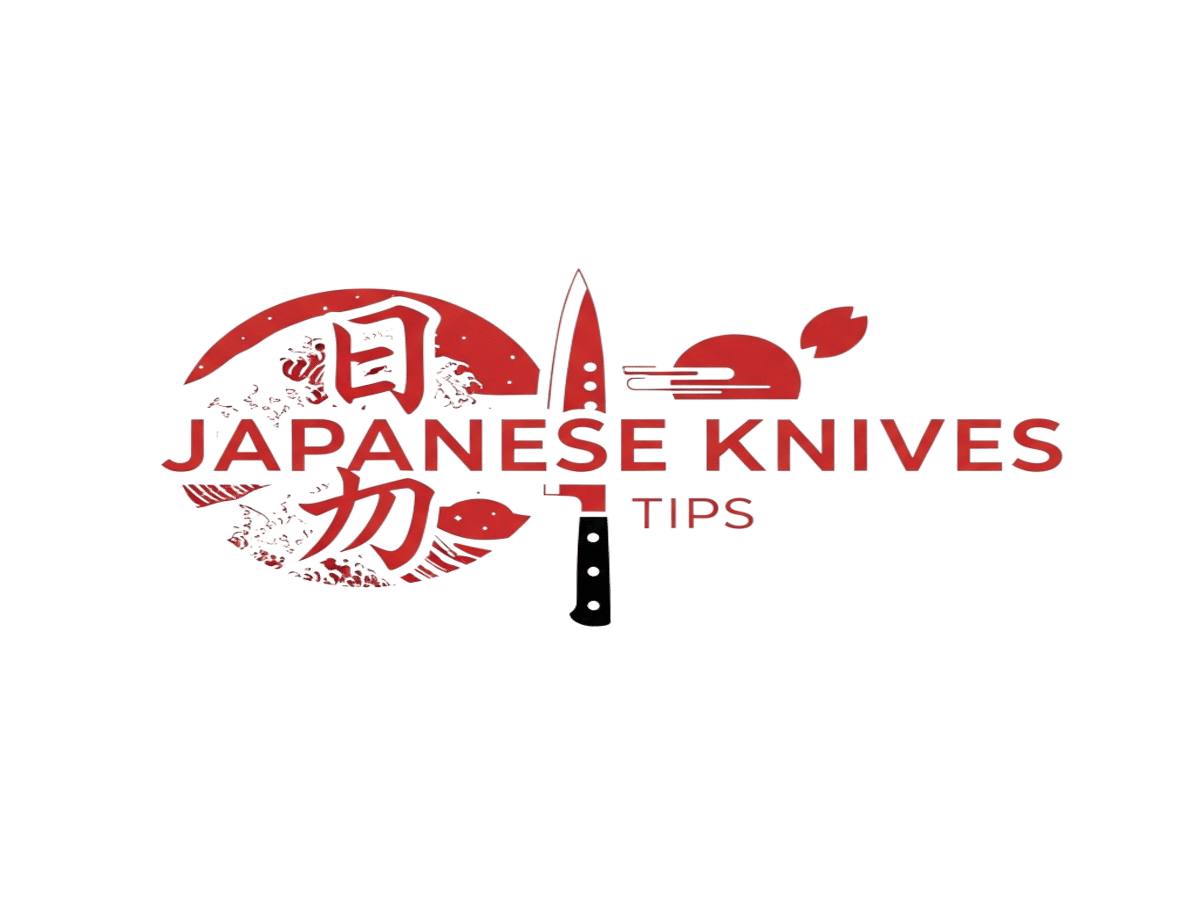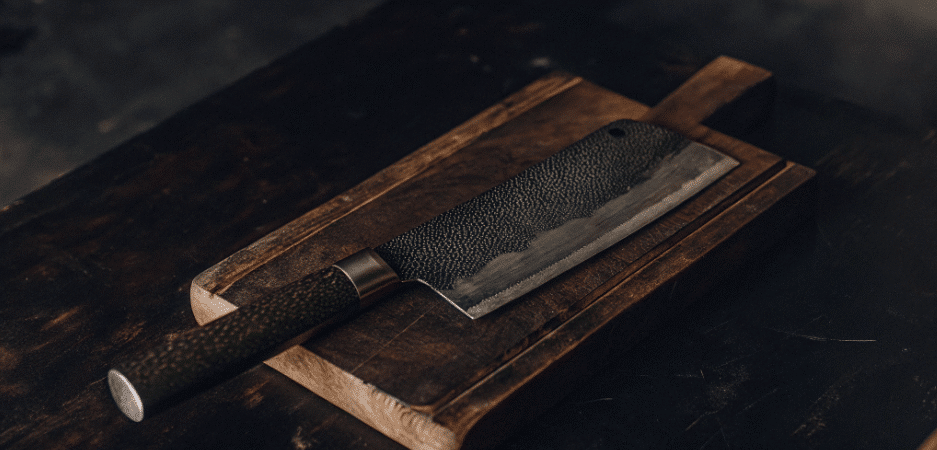If you’ve ever cooked Asian dishes or done any serious chopping, you’ve probably heard about the Japanese cleaver. The Japanese cleaver knife is renowned for its versatility and exceptional craftsmanship, making it a favorite among both home cooks and professionals. It’s not just any knife—it’s a real workhorse in the kitchen. Whether you’re slicing veggies for a stir fry or cutting through boneless meats, a Japanese cleaver can make your prep work easier and faster. It’s sharp, reliable, and built for precision.
Serious Eats, a trusted authority in the culinary world, often highlights the importance of choosing high-quality kitchen tools like cleavers and provides in-depth reviews to help you make informed decisions.
I’ve been using one for a while now, and I want to share what makes it stand out, what types you might want to consider, and how to take care of it so it lasts. I’ll also introduce my favorite cleaver picks to help you find the right fit for your kitchen. If you’re curious about adding one to your kitchen, keep reading.
- What Is a Japanese Cleaver?
- Types of Japanese Cleavers
- How a Japanese Cleaver Differs from Other Knives
- What To Look For in a Japanese Cleaver
- Testing and Evaluation: How We Chose the Best Japanese Cleavers
- How to Use a Japanese Cleaver
- Taking Care of Your Cleaver
- Storage and Safety Tips for Your Japanese Cleaver
- Some Favorite Japanese Cleavers to Consider
- Why I Recommend a Japanese Cleaver
- Final Thoughts
- FAQ
What Is a Japanese Cleaver?
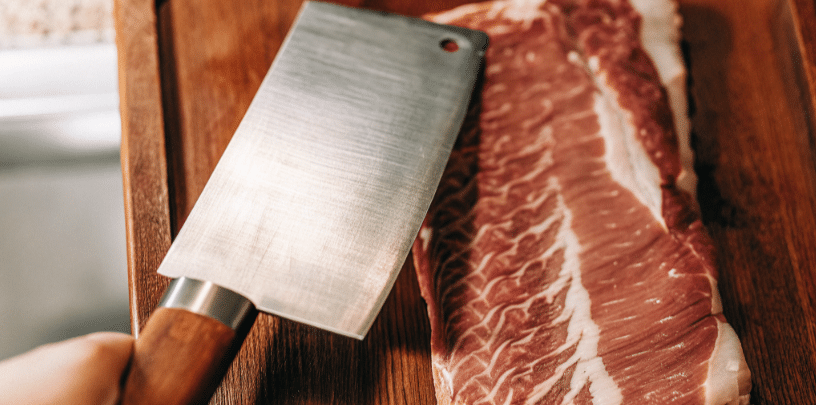
A Japanese cleaver is a kitchen knife that usually has a rectangular shape. Unlike the heavy, thick cleavers you might picture for hacking through bones, Japanese cleavers tend to have thinner, super sharp blades. This design makes them perfect for slicing, dicing, and mincing without crushing the food.
You’ll often see them used for cutting vegetables, boneless meats, and fish. While a larger cleaver or a weighty blade is better suited for heavy-duty tasks like chopping through bones and tough vegetables, the Japanese cleaver excels at preparing ingredients for dishes like stir fry, where you want clean cuts and even pieces.
Types of Japanese Cleavers
There are two main types of Japanese cleavers to know about:
- Nakiri: Designed primarily for vegetables, the nakiri features a thin, straight blade that excels at slicing and chopping produce. Some nakiri knives are made with sharper blades, allowing for more precise and effortless cuts. The handle design can vary, and certain models may have a short handle, which can affect grip comfort and control during extended use.
- Deba: This heavier cleaver is intended for fish and meat, with a thicker blade that can handle bones and tougher cuts. When comparing deba knives, sharper blades are often preferred for clean, efficient cuts through flesh and bone. Handle length and ergonomics also differ, with some deba knives featuring a short handle that may impact maneuverability.
When choosing a Japanese cleaver, it’s important to consider the construction of the knife. A full tang, where the metal of the blade extends through the entire handle, provides greater durability and stability—essential for heavy-duty chopping and butchering tasks.
Traditional Japanese Cleaver
This one is lighter and thinner. It’s great for tasks that need precision, like deboning chicken, making clean slices, mincing meat, or slicing fish. Because it’s easier to handle, you can make delicate cuts without much effort, and ingredients can be sliced thinly and evenly.
Chuka-Bocho (Chinese-Style Japanese Cleaver)
This cleaver is a bit heavier and thicker. It’s more like a butcher knife and can handle tougher jobs, like using its weight to chop through bone, break down chickens, or cut through thicker pieces of meat. It’s also effective for chopping tough vegetables like winter squash. It’s still sharper and lighter than Western meat cleavers but built for a bit more power.
How a Japanese Cleaver Differs from Other Knives
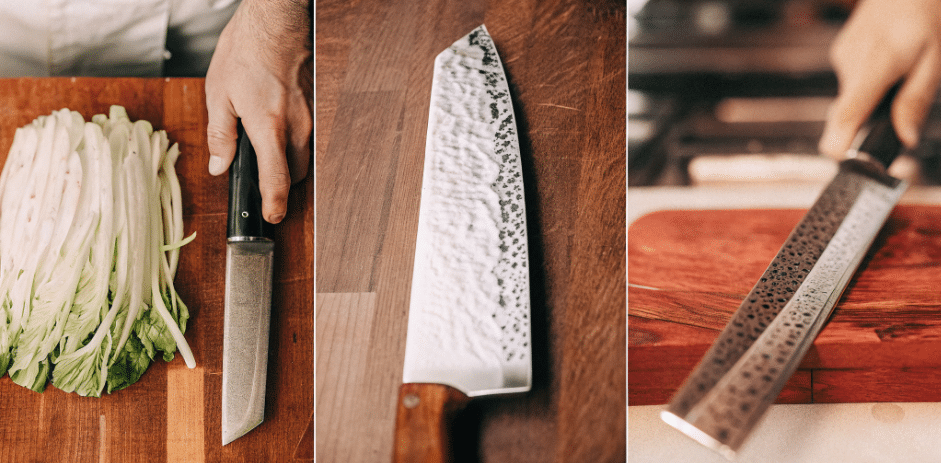
You might wonder how this cleaver compares to other knives in your kitchen. Here’s the deal:
- Compared to a butcher knife: The Japanese cleaver is thinner and sharper, designed for clean slicing rather than heavy chopping.
- Compared to a Chinese cleaver: The Chinese cleaver usually has a thicker blade and is heavier. It’s more about power, while the Japanese cleaver balances sharpness and weight.
- Compared to nakiri knives: Nakiri knives are vegetable knives with thin, straight blades. Japanese cleavers are similar but often bigger and can handle meat too.
What To Look For in a Japanese Cleaver
If you’re thinking about buying one, here are some things to keep in mind:
Look for a weighty blade, as this helps with chopping through tougher ingredients. A full tang construction adds durability and balance. The blade material is also important—high-carbon steel is popular for its edge retention, but it requires regular maintenance to prevent rust. To ensure optimal performance, the blade should be kept sharpened, ideally using a whetstone, which can produce a much sharper edge compared to other methods.
Blade Material
Japanese cleavers usually come with either stainless steel or carbon steel blades.
- Stainless steel blades resist rust and are easier to maintain. They stay sharp for a good while but might dull faster than carbon steel.
- Carbon steel blades are incredibly sharp and hold a great edge longer. They require more care since they can rust if not dried immediately after washing.
Blade Shape and Size
Look for a rectangular blade that’s not too thick. A thinner blade makes clean cuts and is easier to control. The blade length varies, but something between 6 to 8 inches works well for most home cooks.
Handle
Handles come in wood or synthetic materials. Wooden handles offer a natural grip and feel comfortable, but they need to be hand washed and dried right away to avoid damage. Synthetic handles are easier to care for but might not feel as warm or balanced.
Weight and Balance
A heavy-duty cleaver can help with tougher cuts, but if it’s too heavy, you’ll have trouble controlling it. Try to find a cleaver that feels balanced in your hand—enough weight to help with chopping but not so much that it tires you out.
Testing and Evaluation: How We Chose the Best Japanese Cleavers
Finding the best Japanese cleavers? We didn’t just read specs. We tested them. Real kitchens. Real cooking. We got different Japanese cleavers. Different blade shapes. Different stainless steel blades. Different handle designs. We wanted to see how they worked. Everyday cooking tasks. That’s what mattered. We chopped. We sliced. Crisp vegetables. Boneless meats. Different textures. Different thicknesses. Each blade got tested.
How tough are these cleavers? We found out. Butternut squash was the real test. Tough produce. Sharp blades matter. Edge retention matters too. Can they stay sharp? Even after lots of use? That’s what we wanted. The Japanese handle had to feel right. Comfort matters. Grip matters. Long prep sessions? The knife should feel secure. Balanced too.
Home cooks need versatile cleavers. Professionals too. Mincing herbs? Check. Chopping meat? Check. Delicate slicing? Also check. Equal ease for all tasks. We tested these cleavers in real cooking. Real situations. Which ones were best? Sharpness mattered. Durability mattered. User-friendly design mattered. Our top picks stood out. Great performance. Reliable tools. Perfect for anyone who loves Japanese knives.
How to Use a Japanese Cleaver
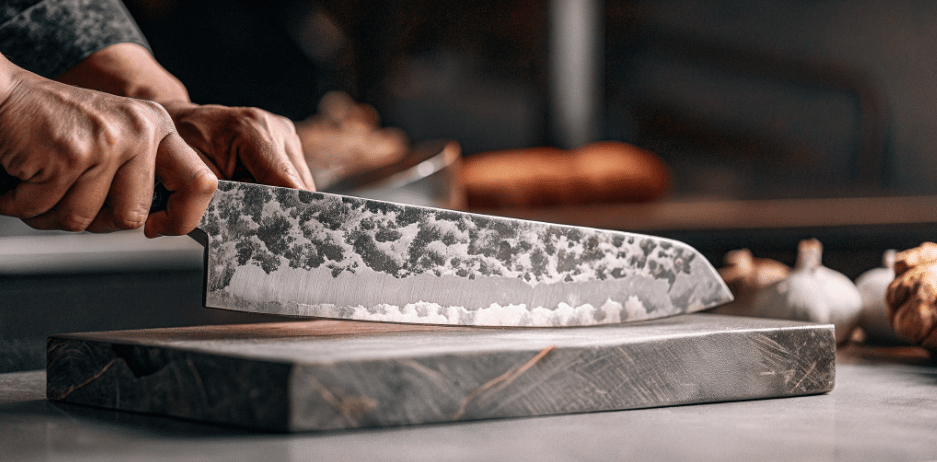
Using a Japanese cleaver is straightforward once you get the hang of it. Here are some tips:
- Use a cutting board that’s sturdy and won’t dull your blade.
- For vegetables, use a rocking motion to make clean cuts.
- When slicing meat, keep the blade angle consistent for even pieces.
- The flat side of the blade can be handy for crushing garlic or ginger.
- Avoid using the cleaver on bones unless it’s a heavier chuka-bocho style.
Taking Care of Your Cleaver
Keeping your cleaver in good shape is simple if you follow these steps:
- Always hand wash your cleaver with mild soap and dry immediately.
- Avoid putting it in the dishwasher—the heat and moisture can dull the blade and damage the handle.
- Use a whetstone or sharpening stone to keep the edge super sharp. Regular honing helps maintain the blade between sharpenings.
- Store your cleaver in a knife block, on a magnetic strip, or with a blade guard to protect the edge.
Storage and Safety Tips for Your Japanese Cleaver
Taking care of your Japanese cleaver is important.
Very important.
It’s not just about sharpening.
Storage matters too.
Smart handling helps.
Keep your blade sharp.
Store it right.
Use a knife block.
Try a magnetic strip.
Get a blade guard.
This protects the edge.
Keeps it safe.
Away from kids.
Away from pets.
Carbon steel needs care.
Special care.
Dry it fast.
Right after washing.
Rust is bad.
Very bad.
Store it dry.
Keep it dry.
No damp counters.
No sinks.
Regular sharpening works.
It keeps blades super sharp.
Ready for chopping.
Ready for slicing.
Perfect for stir fry.
Great for big meals.
Use a bench scraper.
It helps.
Move food safely.
Protects the blade.
Keeps fingers safe.
Handle with care.
Always.
Use a steady grip.
No excessive force.
Blades can slip.
Blades can chip.
Follow these habits.
Simple habits.
Your cleaver stays sharp.
Stays safe.
Stays reliable.
For years.
Professional chefs know this.
Home cooks too.
Great knives need great care.
Some Favorite Japanese Cleavers to Consider
Here are a few popular options that many home cooks and professional chefs like:
Sakai Takayuki 33 Layer Damascus Chinese Cleaver
This one has a sharp, durable blade with a comfortable wooden handle. It’s great for slicing vegetables and boneless meats and holds its edge longer than many others.
Takeda Aogami Super Chinese Cleaver
Known for its razor sharp carbon steel blade, this cleaver is handmade and perfect if you want a knife that lasts and performs well with heavy use.
Kazan Ginsan Nashiji Nakiri
Though technically a nakiri knife, it’s a thin blade vegetable knife that’s great for clean cuts and comfortable handling.
Dexter Russell Heavy Duty Cleaver
If you want a heavier cleaver for tougher jobs, this one is a solid choice. It has a sturdy handle and a thick blade that can handle a bit more force.
Why I Recommend a Japanese Cleaver
I’ve found that a Japanese cleaver fits nicely between a chef’s knife and a heavy-duty meat cleaver. It’s sharp enough to slice thinly but strong enough to handle bigger cuts. Plus, it’s versatile—you can use it for vegetables, boneless meats, and even mincing herbs or garlic.
With the right care, it stays sharp and reliable. It’s a great tool for anyone who cooks regularly, especially if you like Asian dishes or want a knife that can do a bit of everything.
Final Thoughts
If you want a knife that’s sharp, versatile, and comfortable to use, a Japanese cleaver is worth checking out. It makes chopping and slicing less work and more precise. Just remember to pick the right blade material and size for your needs, and take care of it properly.
Once you get used to it, you might find yourself reaching for your Japanese cleaver more than any other knife in your kitchen. It’s a solid tool that can help you cook better meals, faster.
If you want, I can help you find the best place to buy one or give tips on sharpening and maintenance. Just ask!
FAQ
What’s the difference between a Japanese cleaver and a Chinese cleaver?
A Japanese cleaver usually has a thinner, sharper blade and is lighter. It’s great for slicing veggies and boneless meat with precision. Chinese cleavers tend to have thicker, heavier blades made for tougher jobs like cutting through bones. So, if you want a versatile knife for everyday prep, the Japanese cleaver is your buddy. If you need more power for heavy chopping, the Chinese cleaver might be better.
Can I use a Japanese cleaver to cut through bones?
Most Japanese cleavers aren’t built for chopping bones since their blades are thinner and sharper. Using them on bones can damage the edge. If you want to cut bones, look for a heavier chuka-bocho style cleaver or a dedicated meat cleaver. For regular kitchen tasks like slicing veggies and boneless meat, a Japanese cleaver will do just fine.
How do I keep my Japanese cleaver sharp?
Keep your cleaver sharp by hand washing it and drying it right away to avoid rust. Use a whetstone or sharpening stone to sharpen the blade when it starts to dull. Honing with a rod between sharpenings helps keep the edge aligned. Avoid dishwashers and rough cutting boards, as they can dull or damage the blade faster. Regular care keeps your cleaver ready for smooth slicing.
